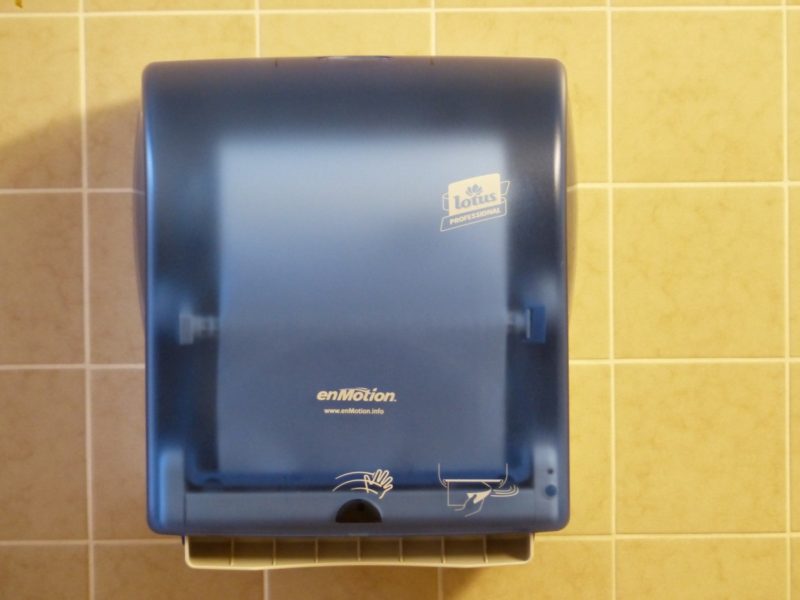Do you know who invented the hand dryer? DJ Watrous, R.B. Hibbard, and J.G. Bassett of the Airdry Manufacturing of Groton, New York, created the first-hand dryer around 1921.
This device is available as a built-in or standalone floor unit, which includes an inverted fan (similar to a portable blow drier) operated by a foot pedal. Such machines were marketed as Airdry Electric Towels found in toilets, hair salons, and workplaces.
Hand dryers have evolved into cutting-edge equipment that can rapidly and effectively dry the hands in any bathroom. Several manufacturers have been working for almost a century to eliminate the hand towel by substituting this with blowing air – or what a real game-changer that has been! The road to development regarding our ecological impact or durability is lengthy, but replacing hand towels with powerful equipment is a good start. Many more surprising facts about hand dryers, so keep reading and discover more.
Basics Of Hand Dryer
After washing hands, the hand dryer seems to be electrical equipment that uses a heat source and an air fan to dry the human hands. It is often used in public toilets as a cost-effective substitute for towels. It may be operated manually or automatically, depending on whether a button is pressed.
Working Principle Of Hand Dryer
Hand dryers are a form of wall fan warmer with their most basic level. It warms the air in the room before blowing it back into it. The hand dryer differs from a wall fan warmer since it does not become as hot, does not operate for long periods, doesn’t seek to heat a whole area, and therefore is designed exclusively for use in bathrooms, whereas not every wall fan warmer is intended to be put in a toilet area.
An infrared sensor, often known as a start button, usually starts the hand-drying operation. Movement activates detectors, as well as the user, must press a push button to launch them. Any of these will trigger the hand dryer. When activity occurs, the motor will turn on.
It draws air in via the intake ports carved into the sides of the vehicle. Such vents allow air to pass through filtration before reaching the engine. After passing via motor, the cleansed air is blasted out at up to 430 miles an hour. Its atmosphere is channeled through one or two nozzles after passing past heating devices (typically electrical heating metal parts). The area beneath the nozzle output is where people hold their hands to dry them. You may also be interested to know which hand dryer is best.
Benefits Of Hand Dryer
Hand dryers are believed to be environmentally friendly since they produce less waste and debris when compared to paper towels, which cannot be reused. Hand dryer makers believe that removing this need for paper towels will save over 4 billion paper towels each year, equivalent to around 100,000 trees. According to another research, while the bulk of a hand dryer’s impact on the environment happens during usage, the effect on the background of paper towels occurs mainly during the materials manufacturing and production phases. Hand dryers are projected to consume 7% less power in the first year and 25% lesser over four years than paper towels.
Global Dryer research of 100 hand dryers equipped in school systems in Topeka, Kansas, asserted average savings of 33.5 tonnes of waste, 670,000 gallons of fresh water, as well as 588 tree branches; some other Global Dryer research of 150 hand dryers mounted in the Iowa statehouse claimed average savings of 10 tonnes of waste and 175 trees. However, once all considerations were considered, Dutch research released in March 1994 found that hand dryers or paper towels for hand drying techniques were not environmentally equal.
After drying them with a warm-air dryer, the overall number of germs increased by 192 percent on the fingers tips and 255 percent on the palms. The overall number of germs on the finger’s dividends increased by about 40 percent, and on the palm increased by 15percent after drying with the jet-air drier. The maximum number of germs on the fingertips was decreased by 75 percent and up to 77 percent on the palm after drying hands with a paper towel.
The Hand Dryer Cost
Hand dryers are becoming widespread in the workplace because of their apparent cost savings. According to producers, hand dryers can save up to 95.5 percent on paper towels (for example, a corporation may pay $2840 per year on paper towels, but just $15 per year on hand dryers will vary based on the price of paper towels and power). When opposed to paper towels, which must be changed, they require relatively little care.
Hand dryers produce a lot of noise, which annoys many people. Fixed hand dryers often have over 70 decibels of noise at a radius of 10 feet (3.0 m) when in use. For youngsters whose ears seem to be at the top of the gadget, it is substantially noisier and may violate security limitations. On the other hand, specific models are built to be silent at the expense of drying speed. Well, you’ve already known who invented the hand dryer.
It’s A Wrap!
You have learned who invented the hand dryer. The hand dryer is a very innovative electric device that eliminates using paper towels which is healthier for our environment. Click on these links to read related articles; know how to disconnect a gas dryer and how to switch from gas to electric dryer. Thank you, friends, for staying with us.

